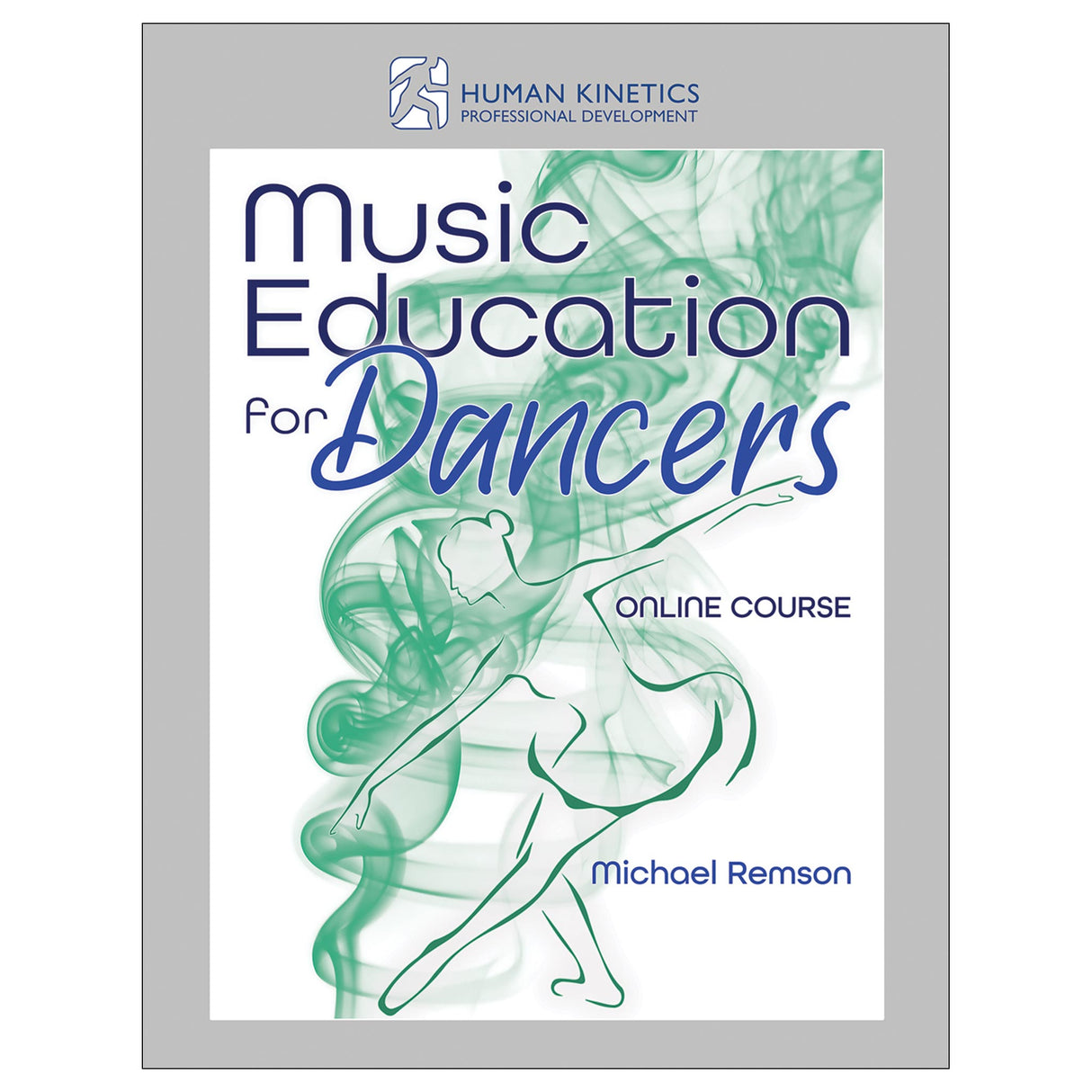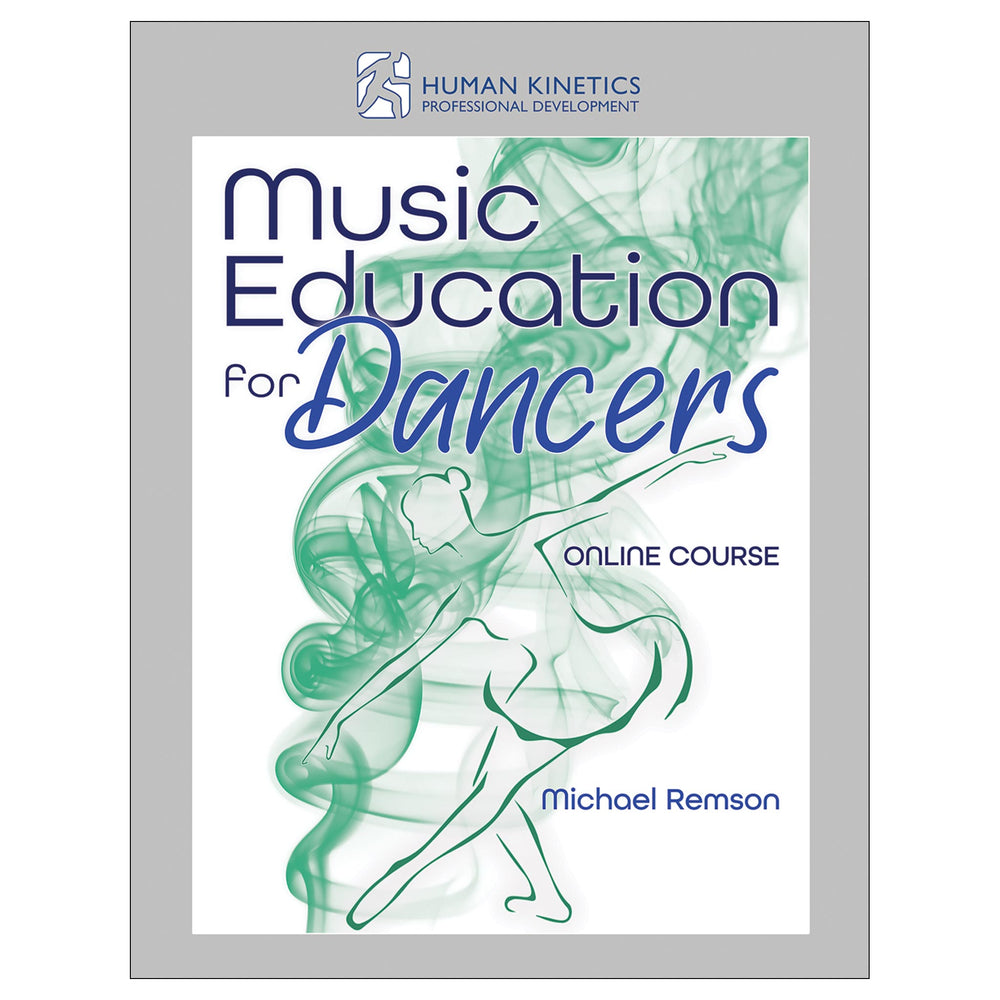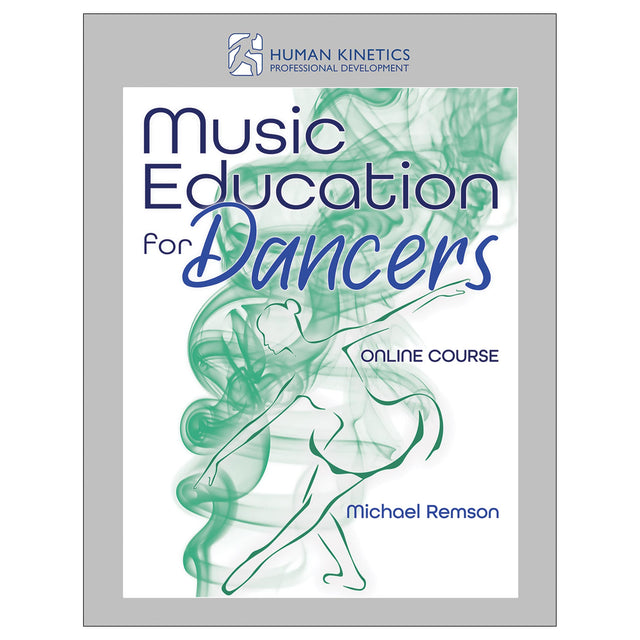Online Course
Music Education for Dancers Online Course
Author: Michael Remson
$75.95 CAD
Unit price
/
Unavailable
Online Course
$75.95 CAD
$75.95 CAD

Online Course
Music Education for Dancers Online Course is a high-quality professional development product for K-12 dance educators.
Through this 14-module course, dance educators will learn about music fundamentals; understand instrument sounds, rhythm, melody, form, and style; be able to apply this knowledge to their choreography; and use their increased knowledge to assist students in developing their own musicality.
The course content can be applied in K-12 classrooms and is especially appropriate for middle and high schoolers. Theater teachers also will find this resource useful, and the course can be used as supplemental material in higher education courses in dance, music, and theater departments.
Adding to its flexibility, Music Education for Dancers Online Course is practical for school districts that want the option of delivering professional development (PD) either in person or virtually. Depending on how deeply facilitators want to delve into each module and its accompanying choreography assignments, the course could be completed over several sessions in one semester or delivered over two school years for at least 16 hours of PD credit. A downloadable certificate of completion is available for participants to submit to their administrators for PD credit.
Each module takes about 60 to 80 minutes to complete. Participants can work through the modules on their own, at their own pace. The modules can also be delivered by district coordinators or other facilitators in a series of in-person workshops. The course comes with a digital facilitator guide that provides pacing and timing recommendations for delivering the course, module-specific tips for implementation, and prompts for discussion or other group work.
The course includes all of the following:
There is no other product like Music Education for Dancers Online Course. With its flexible, robust PD modules, dance educators are sure to broaden their understanding of music and then use their new understanding to help their students develop stronger musicality as performers.
Through this 14-module course, dance educators will learn about music fundamentals; understand instrument sounds, rhythm, melody, form, and style; be able to apply this knowledge to their choreography; and use their increased knowledge to assist students in developing their own musicality.
The course content can be applied in K-12 classrooms and is especially appropriate for middle and high schoolers. Theater teachers also will find this resource useful, and the course can be used as supplemental material in higher education courses in dance, music, and theater departments.
Adding to its flexibility, Music Education for Dancers Online Course is practical for school districts that want the option of delivering professional development (PD) either in person or virtually. Depending on how deeply facilitators want to delve into each module and its accompanying choreography assignments, the course could be completed over several sessions in one semester or delivered over two school years for at least 16 hours of PD credit. A downloadable certificate of completion is available for participants to submit to their administrators for PD credit.
Each module takes about 60 to 80 minutes to complete. Participants can work through the modules on their own, at their own pace. The modules can also be delivered by district coordinators or other facilitators in a series of in-person workshops. The course comes with a digital facilitator guide that provides pacing and timing recommendations for delivering the course, module-specific tips for implementation, and prompts for discussion or other group work.
The course includes all of the following:
- Video introductions and narrated instruction from the course author, Dr. Michael Remson, who is president and CEO of the San Diego Youth Symphony
- Handouts, choreography assignments, and rubrics, which can be used for professional development and with students
- Listening exercises with audio clips of classical and non-classical music examples to illustrate the concepts being taught
- Short quizzes at the end of each module as well as a cumulative quiz at the end of the course (The quizzes are automatically graded by the system, and right/wrong feedback appears immediately. Participants can print the quiz results and have the option of reviewing their answers or retaking the quiz.)
There is no other product like Music Education for Dancers Online Course. With its flexible, robust PD modules, dance educators are sure to broaden their understanding of music and then use their new understanding to help their students develop stronger musicality as performers.
Audience
K-12 dance or arts coordinators; dance, music, or theater teachers; also can serve as a digital resource or course material for university courses in dance, music, and theater programs. Part I. Understanding Sound
Module 1. Instruments of the Orchestra
Module 2. Other Instruments and Instrument Groups
Module 3. Learning About Range
Module 4. Learning About Dynamics
Module 5. Layers and Texture
Part II. Understanding Rhythm
Module 6. Simple Meter
Module 7. Compound Meter
Part III. Understanding Melody
Module 8. Melody
Module 9. Harmony
Part IV. Understanding Form
Module 10. Learning About Architecture
Module 11. Building Larger Forms
Module 12. Exploring Complex Forms
Part V. Understanding Style
Module 13. Classical and Art Music
Module 14. Folk and Popular Styles
Module 1. Instruments of the Orchestra
Module 2. Other Instruments and Instrument Groups
Module 3. Learning About Range
Module 4. Learning About Dynamics
Module 5. Layers and Texture
Part II. Understanding Rhythm
Module 6. Simple Meter
Module 7. Compound Meter
Part III. Understanding Melody
Module 8. Melody
Module 9. Harmony
Part IV. Understanding Form
Module 10. Learning About Architecture
Module 11. Building Larger Forms
Module 12. Exploring Complex Forms
Part V. Understanding Style
Module 13. Classical and Art Music
Module 14. Folk and Popular Styles





